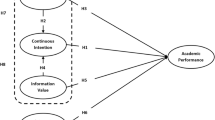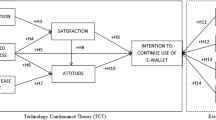Abstract
Tourism is the main source of economic growth and a creator of employment of various kinds. The Rajasthan state got the fifth rank in the top 10 tourist destinations among domestic tourism ranks. The main inflection of this paper is to investigate the influence of tourist satisfaction of international tourists on future behavioral intentions with special reference to the desert triangle of Rajasthan. The holiday satisfaction model was used to construct the survey method applied in this study. According to the findings, tourist holiday satisfaction is particularly high for attraction qualities in numerous tourist sites in Rajasthan's desert triangle. The HOLSAT model was used to calculate the average mean of experience and expectation in this study, and the results show that the attributes described as attractions, accessibility and activities components are those that foreign visitors value the most. International tourists, on the other hand, give the lowest scores to qualities classed under amenities and accommodation components, indicating that international tourism has a long way to go.Thus, the tourism sector will need to guide human resources to curate and deliver these experiences.
Similar content being viewed by others
References
Confente I (2015) Twenty-five years of word-of-mouth studies: a critical review of tourism research. Int J Tour Res 17:613–624
Sharma G, Baoku L (2013) Customer satisfaction in Web 2.0 and information technology development. Inf Technol People 26(4):347–367
Oliver RL (1997) Satisfaction: a behavioral perspective on the consumer. McGraw Hill, New York
Pizam A, Ellis T (1999) Customer satisfaction and its measurement in hospitality enterprises. Int J Contemp Hosp Manag 11(7):326–339
Sini RS (2016) A study on the satisfaction levels of domestic and foreign tourists who visit Kerala beaches. Int J Adv Res 4(11):1677–1682. https://doi.org/10.21474/IJAR01/2261
Okello MM, Grasty K (2009) The role of large mammals and protected areas to tourist satisfaction in the northern circuit, Tanzania. Tourism Anal 14(5):691–697
Cadotte ER, Woodruff RB, Jenkins RL (1982) Norm and expectations predictions: how different are the measures? In: Hunt HK, Day RL (eds) Proceedings of the seventh annual conference on consumer satisfaction, dissatisfaction, and complaining behaviour. Indiana University, School of Business, Bloomington, Indiana
Tribe J, Snaith T (1998) From SERVQUAL to HOLSAT: holiday satisfaction in Varadero, Cuba. Tourism Manage 19(1):25–34
Hau TC, Khatijah O (2014) The Impact of Service Quality on Tourist satisfaction: The Case Study of Rantau Abang Beach as a Turtle Sanctuary Destination. Mediterr J Soc Sci 5(23):1827–1832
Al-Ababneh M (2013) Service Quality and Its Impact on Tourist Satisfaction. Interdiscip J Contemp Res Bus 4(12):164–177
Canny IU (2013) An empirical investigation of service quality, tourist satisfaction, and future behavioral intentions among domestic local tourists at Borobudur temple. Int J Trade Econ Financ 4(2):86–91
Alegre J, Garau J (2010) Tourist satisfaction and dissatisfaction. Annals Tour Res 37(1):52–73
Mill RC, Morrison AM (2009) The tourism system, 6th edition. Kendall, London
Manne R, Kantheti S (2020) COVID-19 and its impact on air pollution. Int J Res Appl Sci Eng Tech (IJRASET) 8(11):344–346. https://doi.org/10.22214/ijraset.2020.32139
Parasuraman A, Berry LL, Zeithaml VA (1988) SERVQUAL: a multiple- item scale for measuring consumer perceptions of service quality. J Retail 4:12–37
Cronin JJ, Taylor SA (1994) SERVPERF versus SERVQUAL: reconciling performance-based and perceptions-minus-expectations measurement of service quality. J Mark 58:125–131. https://doi.org/10.1177/002224299405800110
Oliver RA (1980) A cognitive model of the antecedents and consequences of satisfaction decisions. J Mark Res 17:460–469. https://doi.org/10.1177/002224378001700405
Churchill GA, Surprenant C (1982) An investigation into the determinants of customer satisfaction. J Mark Res 19:491–504. https://doi.org/10.1177/002224378201900410
Truong T-H, Gebbie PJ (2007) Market segmentation of australian tourists in Vietnam: an application of the HOLSAT model. In: Chang PR (ed) Tourism management in the 21st century. Nova Science Publishers Inc, New York
Shida IO et al (2015) Holiday satisfaction in Penang, Malaysia: A quantitative perspective analysis of international and domestic tourists. Geogr Online Malays J Soc Space 11(7):70–80
Todorovic N, Manojlovic I, Budović A (2017) Measuring tourist satisfaction and destination image with HOLSAT. Glasnik Srpskog Geografskog Drustva 97:87–118
Slack NJ (2019) holsat evaluation of international tourist’s expectations and experiences of Fiji as a holiday destination. Theor Econ Lett 9:2418–2435. https://doi.org/10.4236/tel.2019.97153
Swati S et al (2020) Examining tourist holiday satisfaction using HOLSAT model: evidence from incredible India Campaign. Int J Manag 11(2):48–61
Quach PG (2013) Examining international tourists’ satisfaction with Hanoi tourism (Master’s thesis)
Zeithaml VA, Berry LL, Parasuraman A (1993) The nature and determinants of customer expectations of service. J Acad Mark Sci 21(1):1–12
Aksu A, Icigen ET, Ethiyar R (2010) A comparison of tourist expectations and satisfaction: a case study from Antalya Region of Turkey. Turizam 14(2):66–77
Diaz-Perez FM, Morillo-Moreno MC, Bethencourt-Cejas MY (2011) The user gap (perceptions-expectations) in tourism accommodation services in Merida State, Venezuela. Forum Empresarial 16(1):25–57
Quan S, Wang N (2004) Towards a structural model of the tourist experience: an illustration from food experiences in tourism. Tour Manage 25(3):297–305
Neuhofer B, Buhalis D (2012) Conceptualising technology enhanced destination experiences. J Destin Mark Manage 1(1–2):36–46
Agapito D, Valle P, Mendes J (2014) The sensory dimension of tourist experiences: capturing meaningful sensory-informed themes in Southwest Portugal. Tour Manage 42:224–237
Tung VWS, Ritchie JRB (2011) Exploring the essence of memorable tourism experiences. Ann Tour Res 38(4):1367–1386
Chi CG-Q, Qu H (2008) Examining the structural relationship of destination image, tourist satisfaction and destination loyalty: an integrated approach. Tour Manage 29(4):624–636
Cronin JJ Jr, Taylor SA (1992) Measuring service quality: a reexamination and extension. J Mark 56(3):55–68
Efendi J, Mulig E, Smith M (2007) Information technology and systems research published in major accounting academic and professional journals. J Emerg Technol Account 3. https://doi.org/10.2308/jeta.2006.3.1.117
Kusmayadi ES, Sugiarto EM (2000) Metodologi penelitian dalam bidang kepariwisataan. Jakarta: Gramedia Pustaka Utama
Stephanie E (2003) Slovin’s formula sampling techniques. Houghton- Mifflin, New York
Cortina JM (1993) What is coefficient alpha? An examination of theory and applications. J Appl Psychol 78(1):98–104. https://doi.org/10.1037/0021-9010.78.1.98
Author information
Authors and Affiliations
Corresponding author
Additional information
Publisher's Note
Springer Nature remains neutral with regard to jurisdictional claims in published maps and institutional affiliations.
Rights and permissions
About this article
Cite this article
Saxena, A., Sharma, N.K., Pandey, D. et al. Influence of Tourists Satisfaction on Future Behavioral Intentions with Special Reference to Desert Triangle of Rajasthan. Augment Hum Res 6, 13 (2021). https://doi.org/10.1007/s41133-021-00052-4
Received:
Revised:
Accepted:
Published:
DOI: https://doi.org/10.1007/s41133-021-00052-4




